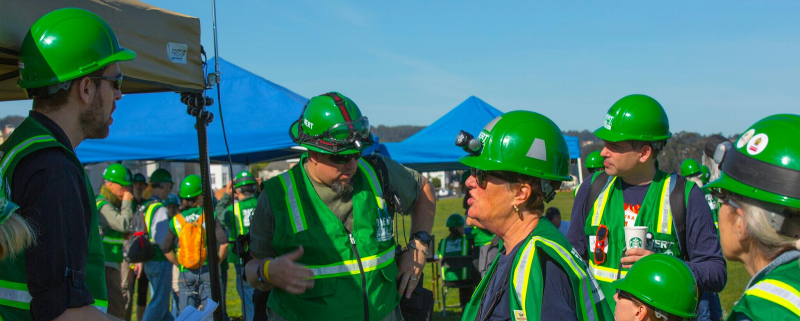In times of the disaster, the old adage says, “The first 72 hours are on you.” Sure, we buy non-perishable foods and gallons of water, stock up on batteries, and fill our gas tanks before a potential hurricane landfall. We monitor the weather watches and warnings and relocate to our safe place when tornadoes or wildfires threaten. We know what preparedness measures to take. But, do we understand what it means to have to take care of ourselves for the first 72 hours before professional help can get to us?
In the NOAA-Specific Incident Command System 300 course taught by the Disaster Preparedness Program, participants learn that disasters happen at the local level first. This means those who live in the impacted community feel the effects first, and should be prepared to be the first line of help. However, this idea not only applies to the impacts, but it also applies to responding after the threat passes. A great way to help yourself, your loved ones, and your community prepare for and respond to a disaster is to get involved!
CERT
A great way to get involved and help support your community is by becoming a member of your local Community Emergency Response Team (CERT). This program educates volunteers about disaster preparedness for the hazards that may impact their area and trains them in basic disaster response skills such as:
- Fire Safety
- Light Search and Rescue
- Team Organization
- Disaster Medical Operations

Not only do CERTs activate when there are disasters in their community, but the skills CERT members learn can also be used if they find themselves a victim of a disaster. In addition, there are CERT programs geared to teens, campuses, workplaces, and companion animal operations. To learn more about CERT and the efforts in your area, contact your local emergency management office.
Coastal Cleanups
Another way to support your community is to reduce and remove objects from our coastal environments that can become marine debris. These objects can come from the land, ocean, or Great Lakes, causing havoc on our marine and coastal resources. The most common items that become marine debris are plastics, glass, metal, paper, cloth, rubber, and wood.
Each year, many coastal communities hold coastal cleanups where citizens can get outdoors and collect items littering our coasts. Not only does this help to reduce waste that is currently on the shore, but it also helps to reduce the amount of debris that can become dangerous objects in a storm or get transported elsewhere by strong winds and flooding. These efforts can reduce economic loss, habitat damage, wildlife entanglement and ghost fishing, ingestion by marine species, vessel damage, navigation hazards, and alien species’ transportation. To learn more about ways you can help, check out the NOAA Marine Debris Program.

Weather-Ready Nation Ambassador
We turn to NOAA’s National Weather Service (NWS) for reputable weather-related information and science in times of natural disasters. By issuing watches and warnings from hurricanes to blizzards, the NWS keeps local communities up to date on the weather hazards that impact their area. However, they cannot spread the word alone. The Weather-Ready Nation Ambassador initiative is an effort to recognize NOAA partners who are improving the nation’s readiness, responsiveness, and overall resilience against extreme weather, water, and climate events. Ambassadors serve pivotal roles in affecting societal change by:
- Promoting Weather-Ready Nation messages and themes
- Assist with StormReady and TsunamiReady opportunities
- Share preparedness and resilience success stories
Most importantly, an Ambassador serves as an example by educating people and the community on weather-related preparedness. To get involved, check out the Weather-Ready Nation Ambassador program.
The safety and well-being of our friends, family, and community does not solely fall on our emergency workers—it is an effort that we all need to embrace. By getting involved in your community through CERTs, coastal cleanups, a Weather-Ready Nation Ambassador, or something else, taking a whole community approach is the best way to support each other before, during, and after disasters strike. In honor of National Preparedness Month, get out there and get involved!
